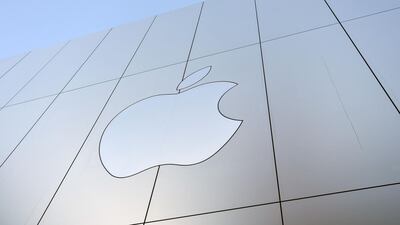Apple quelled concern over lacklustre iPhone demand with results showing that when consumers buy the gadget, they’re willing to pay up for the most-expensive model.
Apple shares rose 3.6 percent in extended trading, after closing at $167.78 in New York on Thursday.
The average selling price for the iPhone, Apple’s most important gadget, was $796 in the crucial holiday quarter. That was up from less than $700 a year earlier and it suggests that people are gravitating toward the iPhone X, which starts at $999. The metric reassured investors who were initially spooked when Apple forecast lower-than-expected revenue in the current quarter and reported total iPhone holiday sales that missed analysts’ estimates.
“iPhone units were below expectations, though much higher ASP helped offset the unit softness,” Amit Daryanani, an analyst at RBC Capital Markets, wrote in a note to investors.
Apple said revenue in the three months ending in March will be $60 billion to $62 billion. Analysts were looking for $65.9 billion on average, according to data compiled by Bloomberg. For the final quarter of 2017, Apple sold 77.3 million iPhones, down one percent from a year earlier and below analysts’ projections of 80.2 million units.
That capped a flurry of reports indicating that Apple was cutting orders to suppliers and that consumers were holding off buying iPhones, especially in China, where rivals are undercutting Apple on price.
Fewer new handsets means Apple has to work harder to sell related services, accessories and other devices. It also leaves less time for the company to create its next big hit, be it in wearable technology, augmented reality or transportation. However, strong sales of the iPhone X help Apple with these future projects because the devices are capable of running the latest software and services, in particular augmented reality features.
During a conference call with analysts following the results, Apple CFO Luca Maestri said iPhone sales in the current quarter will growth at least 10 percent, year over year.
Apple sold 5.1 million Macs in the quarter on revenue of $6.9 billion, indicating 5 percent year over year declines. The iPad business continued to grow with the company posting 13.2 million unit sales and revenue of $5.9 billion. IPad units grew by 1 percent, while revenue climbed 6 percent, suggesting more customers bought the more-expensive iPad Pro models.
For services, which includes Apple Music, movie rentals, app downloads, cloud storage upgrades, and digital books, Apple reported revenue of $8.5 billion, topping last year’s $7.2 billion by 18 percent.
The results show Apple is successfully continuing its march to services revenue of roughly $50 billion by 2021. Last year, the segment generated $30 billion in sales. In early January, Apple said customers of its App Store, just one component of the services business, spent more than $890 million in the seven days starting on Christmas Eve.
Apple’s Other Products business generated fiscal first-quarter revenue of $5.5 billion on strong sales of the latest Apple TV set-top-box, continued popularity of the AirPods headphones, and a growing interest in the Apple Watch due to recent models with cellular connectivity.
This segment reported saw revenue jump 36 percent, the largest year-over-year increase among Apple product divisions. In an interview with Bloomberg News, Cook said this was the fourth consecutive quarter of over 50 percent growth for the Apple Watch.
The Other Products business has swelled in recent years, and would rank roughly 220 on the Fortune 500 if it was an independent company. It could see further gains in the March quarter due to the release of the HomePod wireless speaker.

